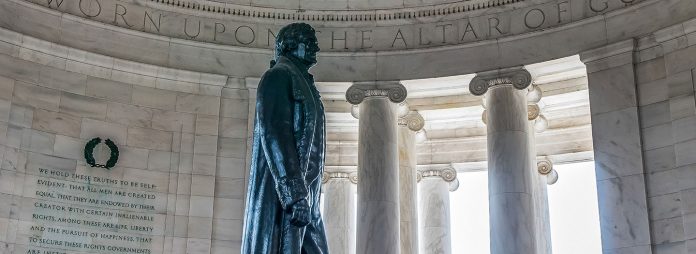It is a nondescript room in Philadelphia, Pennsylvania. Standing behind a plexiglass wall, I could see a table with chairs, a fireplace, and a brown wooden armoire.
Thomas Jefferson stayed at this site for about a hundred days in 1776. It was here that he wrote three drafts of the Virginia Constitution, produced committee reports, authored a position paper, and maintained personal correspondence.
And it was here that he completed the Declaration of Independence.
The house where he stayed for those fateful days was torn down in 1883 but reconstructed by the National Park Service for America’s bicentennial in 1976. As a result, I was looking at a replica of Jefferson’s actual workspace. It was deeply moving to stand at the site where a document that changed history was authored.
“When Thomas Jefferson dined alone”
Thomas Jefferson was one of the most brilliant men America has ever known. I have read four biographies of him and remain deeply impressed with his genius.
When I visited Monticello, the home in Virginia he designed, I was struck by the technological sophistication of his architectural brilliance. Jefferson served our country as the author of our Declaration of Independence and Virginia’s Statute for Religious Freedom. He was secretary of state under President Washington, vice president under John Adams, and president of the United States. He was also the father of the University of Virginia.
He could speak English, French, Italian, and Latin and could read Greek and Spanish. John F. Kennedy famously told a dinner gathering of Nobel Prize winners that the event represented “the most extraordinary collection of talent, of human knowledge, that has ever been gathered together at the White House, with the possible exception of when Thomas Jefferson dined alone.”
However, he also enslaved more than six hundred people over…
… Read More
—
Click Read More to read the rest of the story from our content source/partners – Denison Forum.
